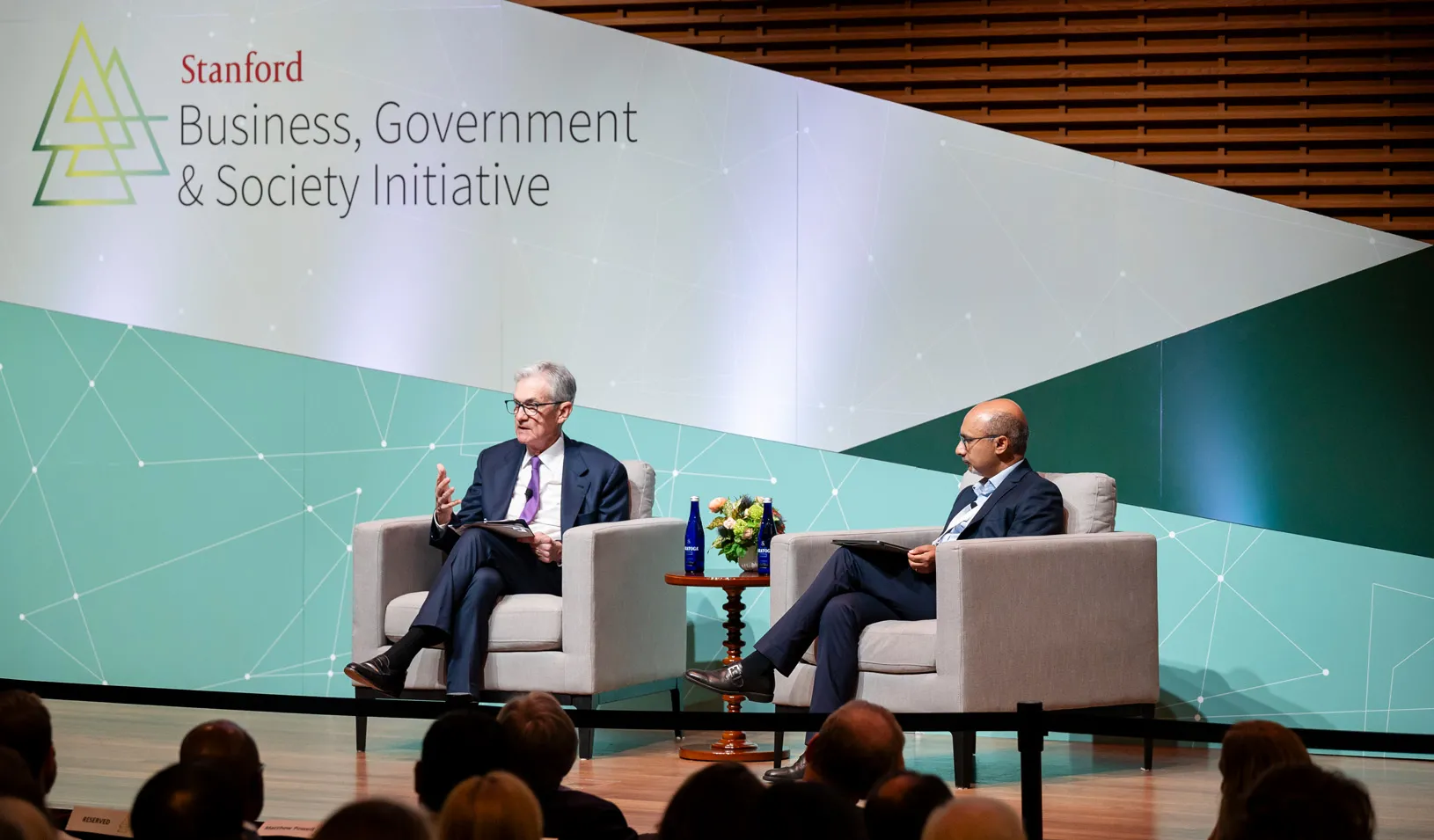Office Artifact: Saumitra Jha’s Arabic Astrolabe
How a medieval navigation tool symbolizes the link between world trade and inter-ethnic harmony.
October 30, 2020

Saumitra Jha holds a brass astrolabe — a navigational tool used by medieval traders — that he bought while doing research in the port of Cochin, India.| Elena Zhukova
I bought this seven years ago when I was doing fieldwork in Cochin, an ancient port on the southern coast of India. It’s a brass astrolabe: a navigational tool used by Muslim traders during the medieval period. It has five rotating globes with Arabic writing on them. The Arabic writing is the intriguing part to me, because Arabic was the lingua franca of trade in the Indian Ocean for many centuries, but I acquired this piece on the coast of South India, where historically most people were Hindu and the most widely spoken language is Malayalam.
I do research on the legacies of trade — particularly how it can create local business relations and engender organizations that reduce inter-ethnic violence.
Editor’s Note
In this series for Stanford Business magazine, we visit Stanford GSB professors’ offices and ask them to share the stories behind one of the favorite knickknacks.
Saumitra Jha is an associate professor of political economy at Stanford GSB.
Back in the Middle Ages, Muslims were the dominant traders in the Indian Ocean, and Hindus seeking to do business overseas had to work with them. This piece is symbolic of how people from these two cultures learned to intermingle and coexist peacefully in the coastal towns that were gateways to trade. Those relationships endured long after the trade went away. Even today, when religious riots erupt in India, erstwhile medieval ports like Cochin have remained oases of peace.
One reason ethnic violence interests me is because my parents are from India, but I grew up in industrial Scotland, where casual racism was not uncommon. Later, at Cambridge, I had my teeth broken while intervening to stop a member of an ethnic minority from being beaten by two men near my college.
I recently cofounded the Stanford Conflict and Polarization Lab. We study how to use approaches like finance and trade incentives to reduce violent conflict and political polarization around the world.
At some point in my life I decided I wanted to study tolerance and peacemaking rather than violence. Studying conflict, things can get very dark, and just changing that frame has made me much happier.
—Told to Steve Hawk
For media inquiries, visit the Newsroom.
Explore More
Back to Class: Pathfinder

Business, Government, and Society Forum Looks at New Demands on Leadership

Erin Nixon Joins Stanford GSB as Assistant Dean of Admissions
